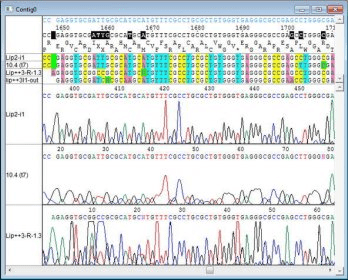

For example, approaches such as genomewide scans for selection, association mapping or quantitative trait loci (QTL) mapping can pinpoint loci of relevance for local adaptation of the target population (Steiner et al. major histocompatibility complex genes Hedrick 1999) and thus enable screening for selectively important variation and assessing the adaptive potential of populations (Primmer 2009). Genome-scale data provide information beyond neutral genetic variation or candidate gene approaches (e.g. Second, the application of genomic technologies opens novel axes of investigation (Allendorf et al. First, by significantly scaling-up the number of genetic markers, genomewide approaches enhance the power and resolution for the above-mentioned applications and improve the reliability of conclusions (Steiner et al. This development has two major implications. Rapid advances in sequencing technology and bioinformatic tools during the last decade have initiated a transition from classical conservation genetics to conservation genomics (Fig. Under the premise of a causal relationship between neutral genetic variation and population viability, these data can inform practical conservation decisions (Frankham 1995). 2009) and have been extensively used to characterize population substructuring and genetic connectivity, to delineate conservation units and to infer interspecific admixture events (Höglund 2009 Allendorf et al. identification of individuals and capture–recapture modelling) and in breeding programs (Romanov et al. Genetic markers are also routinely employed in monitoring schemes (e.g. bottlenecks and expansions), genetic relatedness and the level of inbreeding.

Marker-based measures provide insight into effective population sizes ( N e), recent demographic events (e.g. Traditionally, a small number of neutral genetic markers were employed to study patterns of genetic variation of individuals and populations with the aim to explore underlying processes and their relevance to conservation. The field of conservation genetics is concerned with studying genetic and evolutionary processes in the context of biodiversity conservation (Frankham et al. This tutorial is targeted at scientists with a background in conservation genetics, but more generally, provides useful practical guidance for researchers engaging in whole-genome sequencing projects. Here, we briefly review the state of the art within this field and provide a step-by-step introduction to the workflow involved in genome sequencing, assembly and annotation with particular reference to large and complex genomes. Once this decision is taken, a genome project requires careful planning with respect to the organism involved and the intended quality of the genome draft. Because of the cost and considerable effort involved in such an endeavour, the important first step is to thoroughly consider whether a genome sequence is necessary for addressing the biological question at hand. It is now within reach for individual research groups in the eco-evolutionary and conservation community to generate de novo draft genome sequences for any organism of choice. Rapid progress in high-throughput sequencing technology and the simultaneous development of bioinformatic tools have democratized the field. Genome sequencing projects were long confined to biomedical model organisms and required the concerted effort of large consortia.


 0 kommentar(er)
0 kommentar(er)
